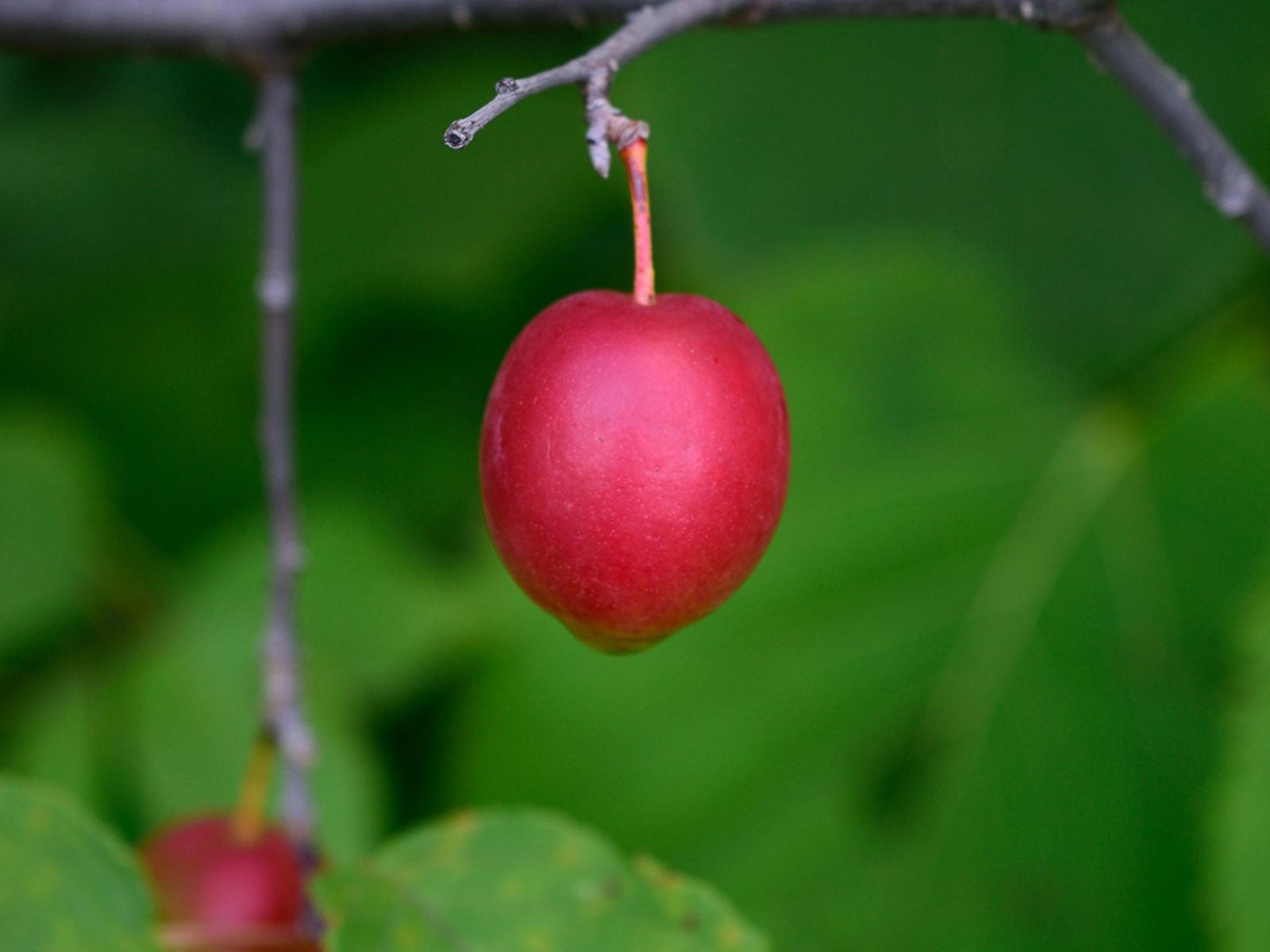
If you have ever taken a hike at the margins of woodlands, you might have seen a wild plum. The American wild plum tree (Prunus americana) grows from Massachusetts, south to Montana, the Dakotas, Utah, New Mexico, and Georgia. It is also found in southeastern Canada.
Growing wild plums is easy in North America, as they are very adapted to many types of regions.
American Wild Plum Tree
Do wild plum trees produce fruit? Nursery-bought plum trees grow from grafted rootstocks, but wild plums need no such process to produce numerous delicious fruits. Plus, wild plum tree care is effortless since the trees actually thrive on neglect.
The wild plum can be found in most cool to temperate states. It is often planted by birds who flock to the fruits when they are in season. The multi-stemmed trees grow in thickets at abandoned sites and disturbed soil areas. Trees form suckers freely and will create a large colony over time.
Trees can grow 15-25 feet ( 4.5-7.5 m.) tall. Pretty 5-petaled, white flowers form around March just before the leaves appear. Serrated, oblong leaves turn a brilliant red and gold in fall. The fruits are very small but full of flavor and make terrific preserves.
Growing Wild Plums
Wild plum grows in almost any soil provided it is freely
draining, even alkaline and clay soils. The trees will even produce fruit in
partially shady sites. Zones 3 to 8 are suitable for growing wild plums.
The broad crown will often lean to the side and the multiple
stems can be pruned to a central leader when the plant is young. Thorny side
branches can be pruned away without affecting plant health.
Wild plums have average water needs once established, but
young trees should be kept moist until roots spread. If you wish to propagate
the tree, it will grow from seed or cuttings. Wild plums have a short life span
but are easy to grow.
Wild Plum Tree Care
Since this plant thrives on neglect, the only special care
is regular water and pruning to improve the appearance.
Wild plums are susceptible to tent
caterpillars, which defoliate the tree. Use sticky traps to ensnare the
moths. Other possible pests are borers,
aphids,
and scale.
Potential diseases are plum
curculio, brown
rot, black
knot, and leaf
spot. Use fungal sprays to prevent most disease problems early in spring.
If you have ever taken a hike at the margins of woodlands, you might have seen a wild plum. The American wild plum tree (Prunus americana) grows from Massachusetts, south to Montana, the Dakotas, Utah, New Mexico, and Georgia. It is also found in southeastern Canada.
Growing wild plums is easy in North America, as they are very adapted to many types of regions.
American Wild Plum Tree
Do wild plum trees produce fruit? Nursery-bought plum trees grow from grafted rootstocks, but wild plums need no such process to produce numerous delicious fruits. Plus, wild plum tree care is effortless since the trees actually thrive on neglect.
The wild plum can be found in most cool to temperate states. It is often planted by birds who flock to the fruits when they are in season. The multi-stemmed trees grow in thickets at abandoned sites and disturbed soil areas. Trees form suckers freely and will create a large colony over time.
Trees can grow 15-25 feet ( 4.5-7.5 m.) tall. Pretty 5-petaled, white flowers form around March just before the leaves appear. Serrated, oblong leaves turn a brilliant red and gold in fall. The fruits are very small but full of flavor and make terrific preserves.
Growing Wild Plums
Wild plum grows in almost any soil provided it is freely
draining, even alkaline and clay soils. The trees will even produce fruit in
partially shady sites. Zones 3 to 8 are suitable for growing wild plums.
The broad crown will often lean to the side and the multiple
stems can be pruned to a central leader when the plant is young. Thorny side
branches can be pruned away without affecting plant health.
Wild plums have average water needs once established, but
young trees should be kept moist until roots spread. If you wish to propagate
the tree, it will grow from seed or cuttings. Wild plums have a short life span
but are easy to grow.
Wild Plum Tree Care
Since this plant thrives on neglect, the only special care
is regular water and pruning to improve the appearance.
Wild plums are susceptible to tent
caterpillars, which defoliate the tree. Use sticky traps to ensnare the
moths. Other possible pests are borers,
aphids,
and scale.
Potential diseases are plum
curculio, brown
rot, black
knot, and leaf
spot. Use fungal sprays to prevent most disease problems early in spring.
